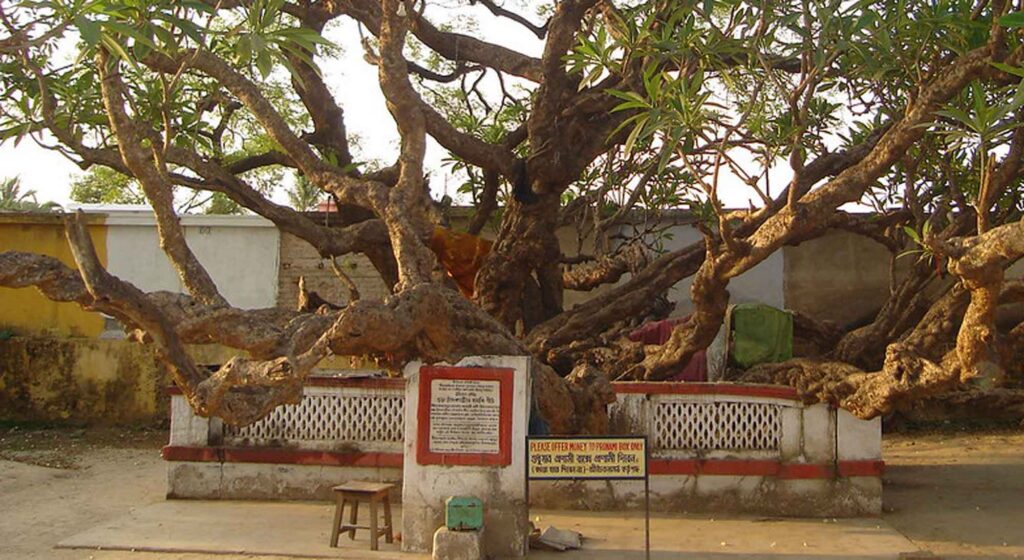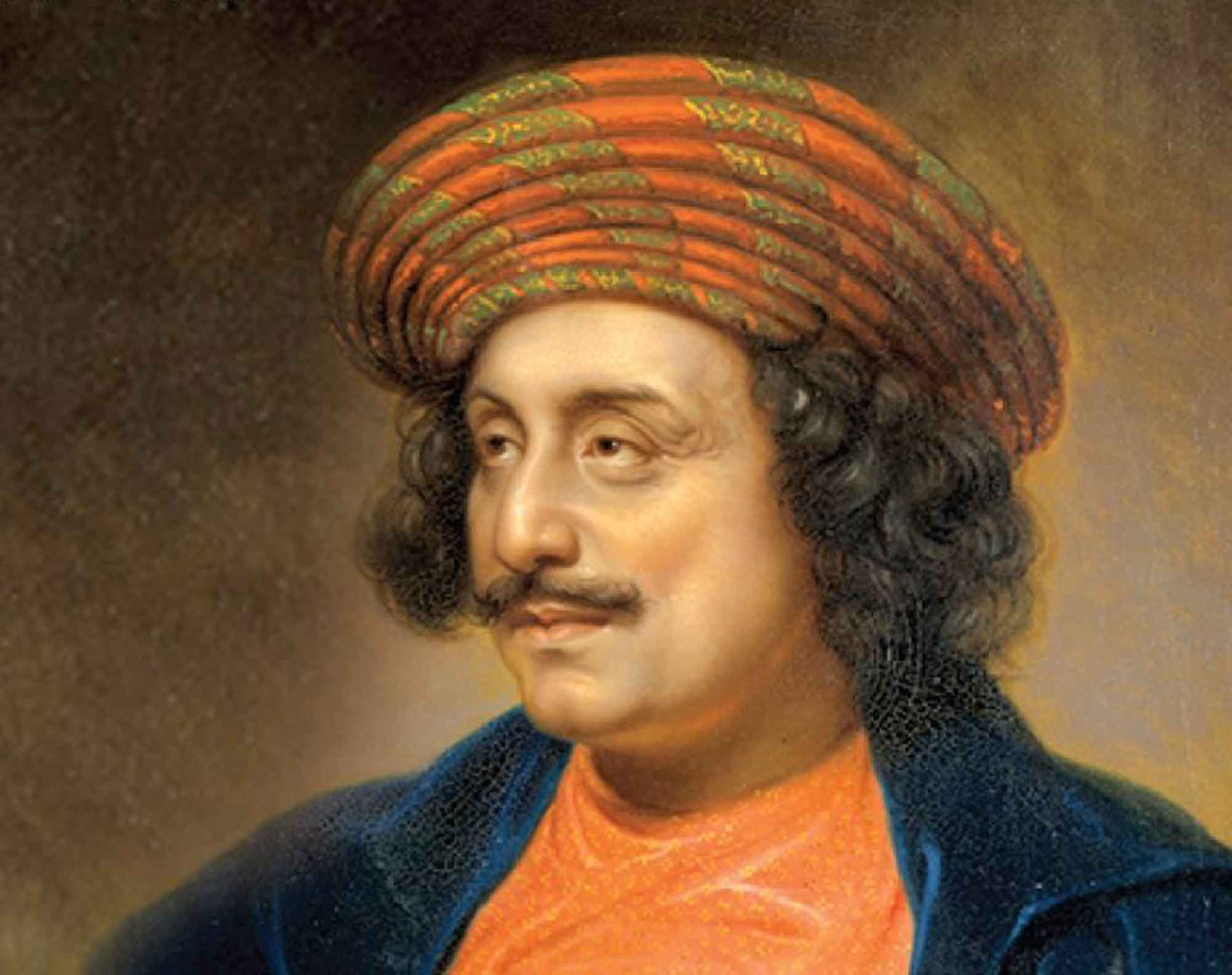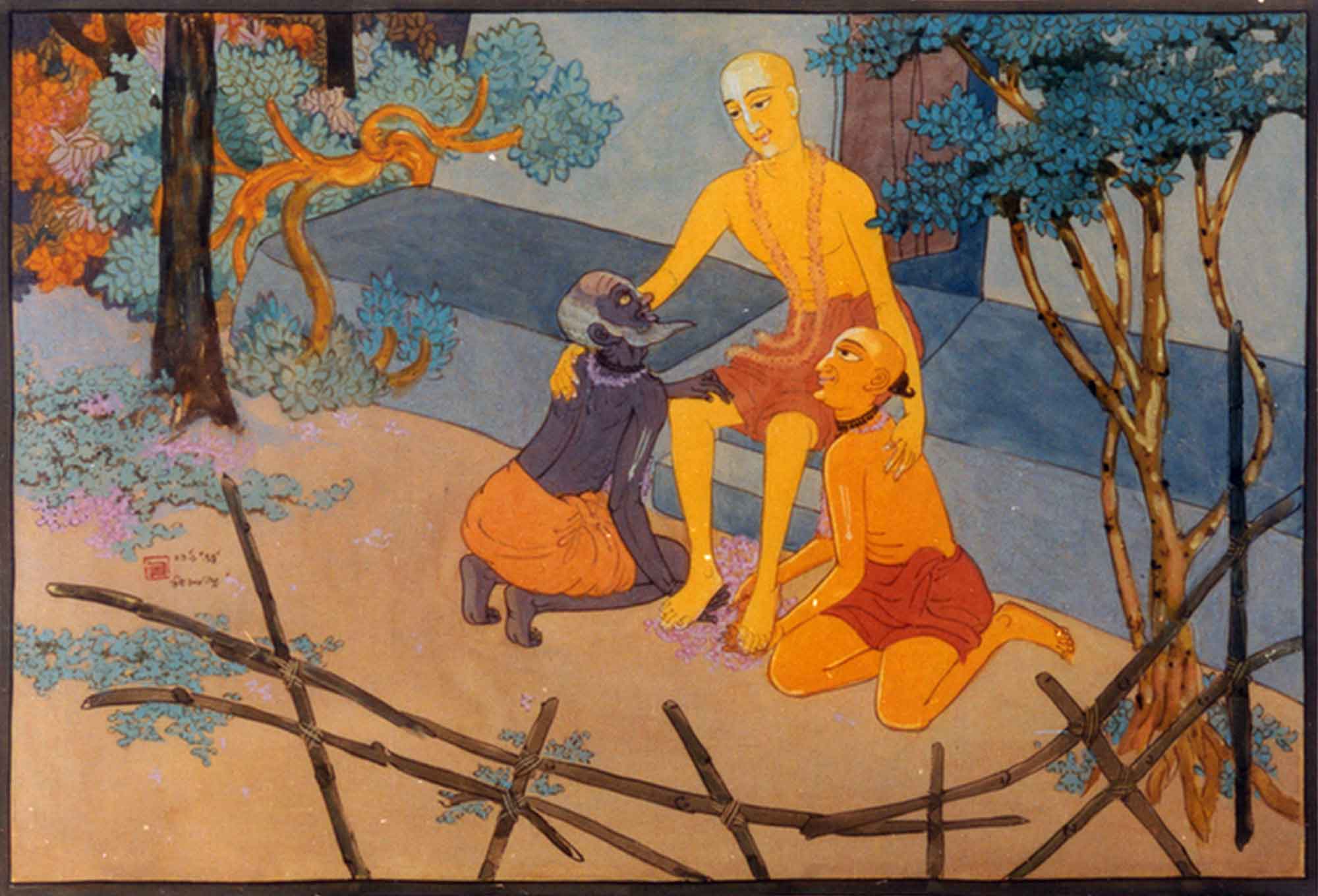Overview
‘Śrī Bhāgavatācārya’ was first published in Sajjana Toṣaṇī, Vol.10 issue 2 in 1885. In this short article Bhaktivinoda Ṭhākura criticizes a descendant of Śrīla Bhāgavatācārya who has written two books expounding the beliefs of the sahajiyās and bāulas.
(translated by Swami B.V. Giri)
Śrīyuta Hari Dāsa Datta Mahāśaya from Vāsudevapura in 24 Pargaṇās has sent us the first volume of Nityopāsanā and the book Bāula-bhāva Yaṣṭi written by Śrīyuta Pañcanana Gosvāmī. We read the two books from beginning to end. It is mentioned in these two texts that Śrīyuta Pañcanana Gosvāmī Padaratna Mahāśaya originates from the dynasty of Śrīla Bhagavatācārya. He presently resides in Bardhaman District, in the village of Ghoḍānāśa near the Post Office in Cānduli.
We were very happy to hear the news that the lineage of Śrīla Bhagavatācārya is still present, but after reading these two books, we were not happy about anything else. The method of sādhana given in the book Nityopāsanā is basically incomplete and useless. This book includes guru-praṇālī, siddha-praṇālī, nitya-karma-upasānā, mānasa-sevā, madhyāna-kāla-kriyā, tilaka-dhāraṇa. tulasī-snāna, aṣṭāṅga-praṇāma, tulasī-cayana-mantra, pūjā-vidhi, āsana-śuddhi, jala-śuddhi, bhūta-śuddhi, guru-dhyāna, radhā-kṛṣna-dhyāna, vaiṣṇava-pūjā, rādhā-kṛṣṇa-praṇāma, sūrya-praṇāma, prāṇāyāma, ṣaṭ-cakra, bhāgavatācārya-dhyāna, puṇḍarīka-vidyānidhi-dhyāna, īśvara-purī-dhyāna, advaitācārya-dhyāna, nityānanda-dhyāna, gadādhara-dhyāna, śrī-caitanya-dhyāna. The book ends with all these articles about sādhana and worship. It is written in this book that in the age of Kali, Gaṇeśa is Bhāgavatācārya, Sūrya is Puṇḍarīka Vidyānidhi, Māyā is Īśvara Purī, Śiva is Advaita, Viṣṇu is Nityānanda. Then these verses are seen at the end:
nitya-karma upāsanā kariyā śravaṇa
prabhu pada vandi punaḥ kare nivedana
(“Hearing about the nitya-karma upāsanā, he offered respects again unto the Lord’s feet and prayed.”)
kaha prabhu kṛpā kari e dīnera prati
kāhāra āśraya nile prāpti vraja-pati
(“He told the Lord, ‘On this day, have mercy upon me. Who should I take shelter in to attain the Lord of Vraja?’”)
prabhu kahe śuna tāhā atyanta virala
guru-pādāśrita hale prapti sarva-phala
(“The Lord replied, ‘Listen, this is extremely rare. But taking refuge at the feet of the guru, one can attain all results.”)
prathame-te guru-pada āśraya karibe
tad ājñāya prakṛtyāśraya ye jana haibe
(“’First, one must take shelter at the feet of the guru. By his instruction one will understand prakṛtyāśraya.”) *
* Translators Note: The word prakṛtyāśraya suggests taking refuge (āśraya) in a woman (prakṛti).
sevā kari tāhāke karibe santoṣa
guṇa-bāṇe milāibe nāhi tāhe doṣa
(“He will be satisfied with your service. There is no fault in attaining Him by the arrow of your qualities.”)
savadhāna haye tabe sandhānera bāṇa
ye sei bāṇe nāi yāya nija prāṇa-nā
(“Just be careful to release the arrow with proper aim. That with that arrow you are not be killed yourself.”)
tabe rūpa-mañjarira āśraya laibe
rūpera kṛpāte citta nirmala haibe
(“Then you will attain the shelter of Rūpa Mañjarī, and by Rūpa’s mercy your heart will become pure.”)
tabe rati rase rase haile āśrita
vṛndāvane rādhā-kṛṣṇa prāpti suniścita
(“Then, by taking refuge in the ever increasing rasa of divine attraction, you will certainly attain Rādhā-Kṛṣna in Vṛndāvana.”)
Reading these verses, the reader will know that this book teaches the thoroughly obscene sahajiyā doctrine. Such a book is not a sādhu-Vaiṣṇava text. The sahajiyā doctrine can be seen throughout the book Bāula Bhāva Yaṣṭi. There is the second song in that book:
sajani ye dike cāi, dekhite pāi, gaurahari nrtya kari
gaura āmāra adhāḥ urddhve, gṛha madhye, gaura antara bāhiye
gaura āmāra śaṅkha sāḍī, sakera cuḍi, gaura āmāra matihāre
gaura āmāra hātera bālā, kāṭi palā, kaṅkanete vihāra kare
(“O beloved, wherever I look, I see Gaurhari is dancing. My Gaura is below and above, in my house, and Gaura is inside me and outside of me. My Gaura is my conch-shell sari, my favorite bangles, Gaura is there in my pearl necklace. Gaura is the bangles of my hand, in my designed coral bangles, He roams around on my bangles.”)
Alas! If Śrī Bhāgavatācārya, an intimate devotee of Śrī Gaurāṅga, returned to the world now, I cannot say what he would think of his descendant. Alas! Pure Vaiṣṇava dharma has suffered such a tragedy nowadays. Anyway, we are happy to hear that there is a descendant of Bhāgavatācārya, but are there no pure Vaiṣṇavas amongst them?













